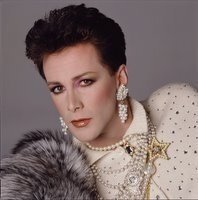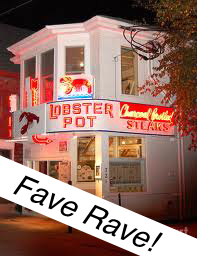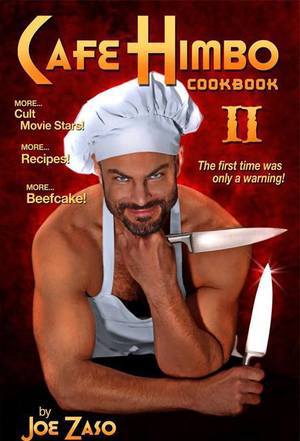A New Sybil Bruncheon's "WHO'Z DAT?"... CECIL KELLAWAY (August 22, 1893 – February 28, 1973)…
/Darlings! Mummy has made a decision! After reading dozens of posts and having hundreds of conversations with well-meaning folks who just don't know about the great CHARACTER actors who gave films the depth and genius that surrounded and supported the so-called "stars", I am going to post a regular, special entry called "SYBIL'S WHO'Z DAT?"....there'll be photos and a mini-bio, and the next time you see one of those familiar, fabulous faces that you just "can't quite place".......well, maybe these posts will help. Some of these actors worked more, had longer and broader careers, and ended up happier, more loved, and even wealthier than the "stars" that the public "worships". (I think there may be a metaphor in that! What do you think???). Here's our next guest!! Over the course of his long career, he was a specialist in characterizations requiring a kindly, crinkly eyed, friendly sort, portraying many priests, doctors, amiable professors, butlers, and family friends, and, even on occasion, a warlock and a leprechaun. And you’d recognize him instantly just by the sound of his distinctively doddering voice and manner.
He’s Cecil Kellaway (August, 22, 1893 – February 28, 1973). Born in Cape Town, South Africa, he was the son of English parents, Edwin John Kellaway, an architect and engineer, and his wife Rebecca Annie, née Brebner. Edwin Kellaway had come to South Africa to help build the Houses of Parliament and was a good friend of Cecil Rhodes, who was Cecil's godfather. He was interested in acting from an early age. He was educated at the Normal College, Cape Town, and in England at Bradford Grammar School. He studied engineering and on his return to South Africa was employed in an engineering firm. However the lure of acting was too strong and he became a full-time actor, making his debut in POTASH AND PERLMUTTER (1910).
He briefly served in the army in 1914 but was invalided out. He returned to the theater immediately. Early plays that he appeared in included THE PRINCE OF PILSEN. He toured for three years through China, Japan, Siam, Borneo, Malaya, North and South Africa, and Europe, in plays such as MONSIEUR BEAUCAIRE. Kellaway arrived in Australia in 1921 under contract to J. C. Williamson Ltd. He had a notable success as the comic father of four daughters in A NIGHT OUT, which he played through most of 1922; he would often return to this role in later years and it kicked off a sixteen-year association with Williamson on the Australian stage, mostly in musical comedies.
For Williamson he was in MARY (1922-23) then returned to A NIGHT OUT before going on to THE CABARET GIRL (1923-24), KISSING TIME (1924), WHIRLED INTO HAPPINESS (1924), KATJA (1925), THE BELLE OF NEW YORK (1925), PRIMROSE (1925), A NIGHT OUT revival (1926), FRASQUITA (1927), PRINCESS CHARMING (1928), HOLD EVERYTHING (1929), FLORODORA (1931), A WARM CORNER (1931), A NIGHT OUT again, SONS O' GUNS (1931), BLUE ROSES (1932), HOLD MY HAND (1932), and THE GYPSY PRINCESS (1933). Kellaway made his film debut in the lead of THE HAYSEEDS (1933), a popular local comedy, directed by Beaumont Smith. However his main focus was still the stage: THE DUBARRY (1934), MUSIC IN THE AIR (1934), ROBERTA (1935), HIGH JINKS (1935), BALL AT THE SAVOY (1935), A SOUTHERN MAID (1936), and WHITE HORSE INN (1936).
He returned to films with the Australian Cinesound film IT ISN'T DONE (1937), for which he also provided the original story. Directed by Ken G. Hall it was a popular success. It led to Kellaway being screen-tested by RKO Pictures and put under contract, at 45 years of age! RKO initially put Kellaway into small roles in lesser films but he worked his way up to the bigger films and roles with GUNGA DIN (1939) starring Victor McLaglen, Douglas Fairbanks, Jr., Sam Jaffe, and Cary Grant.
Kellaway returned to Australia for a second Cinesound film, MR. CHEDWORTH STEPS OUT (1939), which featured a young Peter Finch. But back in Hollywood his films kept getting better, starting with WUTHERING HEIGHTS (1939) starring Merle Oberon and Laurence Olivier, THE SUN NEVER SETS (1939), MAN ABOUT TOWN (1939), THE UNDER-PUP (1939), INTERMEZZO (1939), and WE ARE NOT ALONE (1939)….all in 1939 alone!!
He worked in a variety of dramas, Westerns, comedies, and even horror films throughout the 1940s although they were mostly “B” pictures; MEXICAN SPITFIRE (1940), THE INVISIBLE MAN RETURNS (1940), THE HOUSE OF THE SEVEN GABLES (1940), ADVENTURE IN DIAMONDS (1940), PHANTOM RAIDERS (1940), BROTHER ORCHID (1940), POP ALWAYS PAYS (1940), THE MUMMY'S HAND (1940), DIAMOND FRONTIER (1940), and MEXICAN SPITFIRE OUT WEST (1940). But over the years, his consistent professionalism and distinctive voice, manner, and presentation also earned him roles in star-projects, some of them iconic films like THE LETTER (1940) with Bette Davis and as a mischievous warlock in I MARRIED A WITCH (1942) with Fredric March and Veronica Lake. In 1946 he appeared as the ill-fated husband of Lana Turner's character in the film noir classic THE POSTMAN ALWAYS RINGS TWICE also starring John Garfield. He followed it with the mysterious PORTRAIT OF JENNIE (1948) with Joseph Cotten, and one of the greatest Hollywood feel-good fantasies of all time, HARVEY (1950) with Jimmy Stewart. Even as he began to appear on television in the 1950s, he still squeezed in some of his most memorable film roles; HUSH… HUSH, SWEET CHARLOTTE (1964) again with Bette Davis and Joseph Cotton and co-starring Olivia De Havilland and Agnes Moorehead, and perhaps his most beloved character of all, the monsignor in GUESS WHO'S COMING TO DINNER (1967) with Spencer Tracy, Katharine Hepburn, and Sidney Poitier. He was twice nominated for the Academy Award for Best Supporting Actor, for THE LUCK OF THE IRISH in 1948 and GUESS WHO'S COMING TO DINNER.
In the 1950s, like many great character actors, he began to make the transition to television. In 1959, he made a guest appearance on television on PERRY MASON as chemist and murderer Darrell Metcalf in "The Case of the Glittering Goldfish", and received billing credit equal to Raymond Burr's. He appeared on a couple of episodes of THE TWILIGHT ZONE, and even did Westerns; in 1961, Kellaway guest-starred as MacKay in the episode "Incident In The Middle of Nowhere" on CBS's RAWHIDE with a very young Clint Eastwood. In 1964, he played Santa Claus in the "Visions of Sugarplums" episode of BEWITCHED, which was an odd coincidence. He had been originally offered the role of Santa Claus in MIRACLE ON 34TH STREET (1947) with John Payne, Maureen O’Hara, and the 6 year old Natalie Wood, but he turned it down, telling his son, "Americans don't go for whimsy." The role then went to Kellaway’s own cousin Edmund Gwenn who went on to win the Oscar for it as Best Supporting Actor. In 1967, Kellaway played the part of a lonely, megawealthy much older suitor of Ann Marie (played by Marlo Thomas) in an episode of THAT GIRL. He also appeared as Admiral Snedecker in a 1969 episode of THE GHOST AND MRS. MUIR. Shortly afterwards, his failing health forced him to retire from acting.
Kellaway had married Doreen Elizabeth Joubert in Johannesburg on November 15, 1919 with whom he remained till his death. His brother Alec Kellaway became a notable actor in his own right. His other brother Leion became ballet-master for Edouard Borovansky and the Australian Ballet. His cousins were renowned fellow actors Edmund Gwenn and Arthur Chesney. Kellaway died after a long illness at a West Los Angeles convalescent home on February 28, 1973. He was survived by his wife, two sons, and four grandchildren. He was buried at Westwood Village Memorial Park Cemetery.
[Want to read other fun and funny stories here on SybilSez.com? Just enter any topic that pops into your head in the "search" window on the upper right! Who knows what might come up?...and feel free to share them with your friends!]












